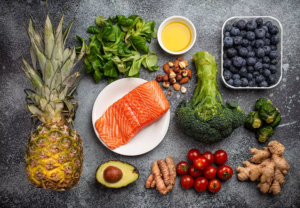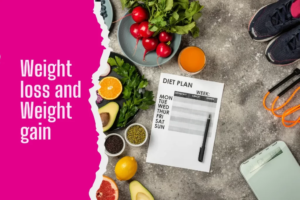Planning your own balanced diet involves creating a well-rounded eating plan that provides all the essential nutrients your body needs while promoting overall health. It involves thoughtful selection of foods from different food groups to ensure you receive a variety of vitamins, minerals, proteins, carbohydrates, and fats. A balanced diet emphasizes whole, unprocessed foods while limiting the intake of refined sugars, unhealthy fats, and excess sodium. By planning your own balanced diet, you have control over your nutritional choices and can customize your meals to suit your taste preferences, dietary restrictions, and health goals. Remember to consider portion sizes, prioritize nutrient-dense foods, and seek guidance from healthcare professionals or dietitians for personalized advice. With a balanced diet, you can nourish your body, support optimal functioning, and promote overall well-being.
Learning to divide your plate into protein, carbohydrates, and fats can be a helpful way to ensure a balanced and nutritious meal. Here are some steps to help you master this technique:
- Understand the Macro nutrients:
– Protein: Protein is essential for building and repairing tissues, supporting immune function, and maintaining muscle mass. Good sources of protein include lean meats, poultry, fish, eggs, dairy products, legumes, and tofu.
– Carbohydrates: Carbohydrates are the body’s primary source of energy. They can be found in foods like whole grains, fruits, vegetables, legumes, and starchy vegetables like potatoes.
– Fats: Healthy fats are important for hormone production, nutrient absorption, and providing energy. Examples of healthy fat sources include avocados, nuts, seeds, olive oil, fatty fish, and plant-based oils.
- Visualize Your Plate:
– Mentally divide your plate into three sections: one for protein, one for carbohydrates, and one for fats( small portion).
– Aim to fill roughly one-fourth of your plate with protein-rich foods, such as chicken, fish, tofu, or legumes.
– Allocate another one-fourth of your plate to carbohydrates, which may include whole grains like brown rice, quinoa, or whole wheat pasta, as well as fruits and non-starchy vegetables.
– Reserve the remaining one-fourth of your plate for healthy fats, such as nuts, seeds, avocado, or a drizzle of olive oil.
- Balance Portion Sizes:
– Pay attention to portion sizes to ensure you’re consuming an appropriate amount of each macro-nutrient.
– Protein: Aim for a palm-sized portion (about 1 bowl) of protein per meal.
– Carbohydrates: Fill the carbohydrate section of your plate with a fist-sized portion (about 1 katori) of whole grains, fruits, or starchy vegetables. Make sure vegetables are double the quantity.
– Fats: Include a thumb-sized portion of healthy fats, such as a tablespoon of oil or a handful of nuts or seeds.
- Customize to Your Needs:
– Adjust portion sizes based on your individual needs, goals, and activity level. Athletes or individuals with specific dietary requirements may require larger or smaller portions of each macronutrient.
– If you have specific dietary restrictions or preferences (e.g., vegetarian, vegan, gluten-free), choose protein, carbohydrate, and fat sources that align with your needs.
- Practice and Seek Guidance:
– Initially, you may find it helpful to measure your portions using measuring cups or a food scale until you develop a good sense of portion sizes.
– Seek guidance from a dietitian or nutritionist who can provide personalized advice and help you create a meal plan that suits your specific needs and goals.
Remember, dividing your plate into protein, carbohydrates, and fats is a general guideline and may vary depending on your dietary requirements and preferences. Planing diets takes hours of planning for professionals and detailed nutrient plan and distribution, this blog only provides basic guidelines. It’s essential to listen to your body, eat mindfully, and make adjustments based on your individual needs and goals.







